#jjk s1
Text
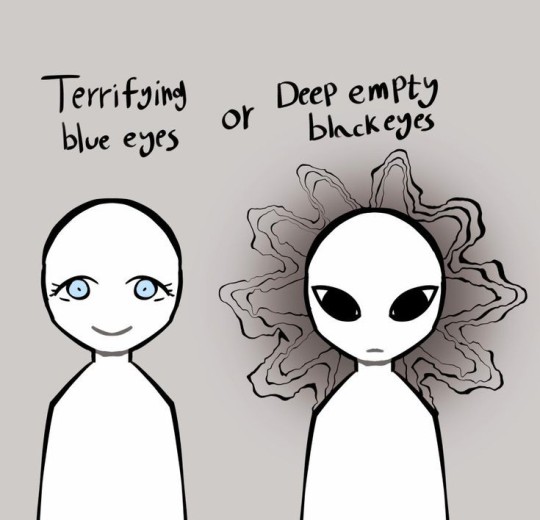
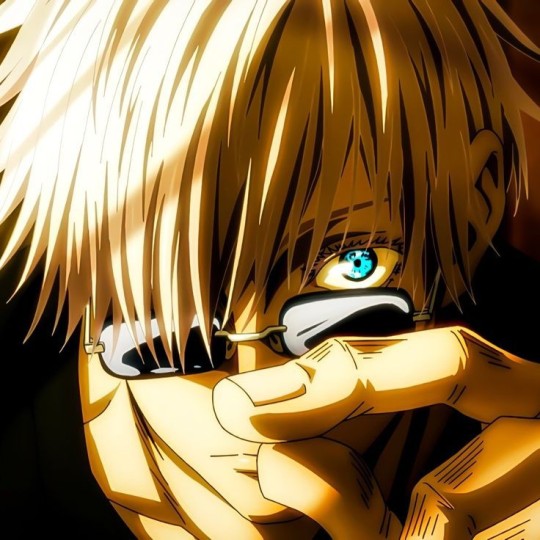

i find them everywhere in everything
10K notes
·
View notes
Text
"NobaMaki in the show can be read as platonic"
Juju Stroll: NobaMaki are GAYYYYY. They know each other's waist sizes as well!!!



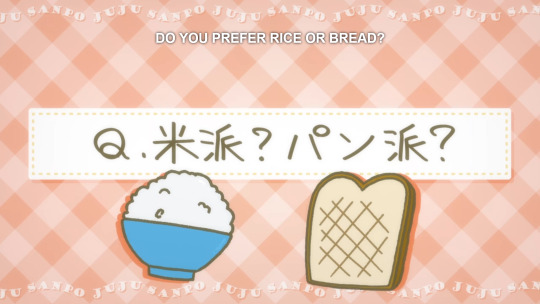



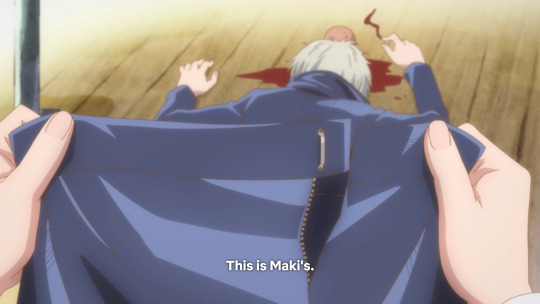
#nobara kugisaki#maki zenin#jjk#jujutsu kaisen#nobamaki#jjk anime#maki x nobara#nobara x maki#juju stroll#jjk s1#nobara taking those questions as a chance to gauge her and Maki's compatibility#this quiz is for funsies#nobara: no this is a speed dating show quiz now#wlw post
100 notes
·
View notes
Text
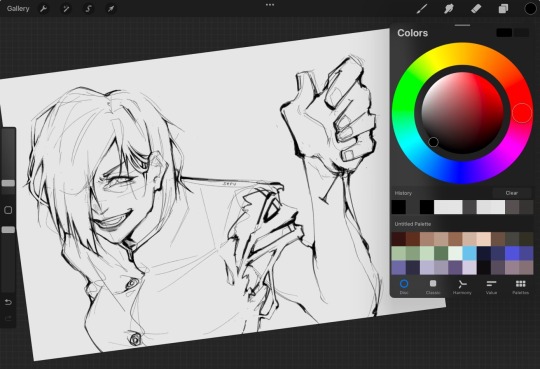
“Let’s play a game of chicken shall we?”
55 notes
·
View notes
Text


megumi night routine
#sleepy megumi#megumi fushiguro#night routine#skincare#fanart#jujutsu kaisen#jujutsu kaisen anime#jujutsu kaisen art#jujutsu kaisen fanart#jjk manga#jjk#jjk anime#digital art#jujutsu kaisen megumi#jujutsu kaisen manga#jjk fanart#jjk megumi#jjk art#jjk s1#jjk s2#jujutsu kaisen season 2#jujutsu kaisen aesthetic#jujutsu kaisen shibuya arc#jujutsu kaisen s2#jujutsu kaisen fushiguro#jujutsu megumi#procreate#megumi fushiguro fanart#megumi fluff#megumi fanart
66 notes
·
View notes
Text
Thinking about how Junpei called Yuji "Itadori-kun" the entire time but at the very end when Mahito transfigured him, is the first and last time Junpei calls him "Yuji".
Thinking about how Yuji never had that hesitation and went straight to calling him "Junpei".
How Yuji was so open and so immediately ready to have Junpei in his life while Junpei was hesitating because he's never had a friend that's stuck with him. No one has stood by him when things got tough. But at the very end he knew Yuji would've been beside him through thick and thin, and that's when he allows himself to admit to that closeness but then it's too late, it's all way too late.
Does Yuji think about those final words? Does he think about Junpei finally allowing himself to trust him, but not even a second later, Yuji was powerless to protect him? Is that why he was desperately praying to Sukuna? Like he was ready to make any deal, and we know Sukuna WANTS full control of Yuji's body and Yuji at that moment would have let him.
But Sukuna didn't only to watch him suffer.
That one freaking arc HAUNTS me.
87 notes
·
View notes
Text
Nanamin
redraw of a scene in jjk season 1

I am obsessed with this suit....I feel like he have a collection of neckties will cool patterns...once again thank you nanami for helping me learn new coloring techniques ^^;;
I give up on making backgrounds....I really need one of those pen thingy that you can use on phones... cause my index fingers might one day give up O _O
#Nanami kento brainrot#nanami kento#jujutsu kaisen#my art#jjk#kento nanami#nanamin#jujutsu kaisen fanart#jjk fanart#fan art#art#artist on tumblr#illustrations#drawing#artists on tumblr#artist#jjk nanami#jjk fanworks#my artwork#jjk season 1#jjk s1#jujutsu kaisen manga#jjk manga#nanami art#fanart#ibispaint art#illustration
24 notes
·
View notes
Text
JJK update!
I've just finished season 1 and watched JJK 0 and all I gotta say is I love JJK so much y'all.
As far as JJK 0 goes, I loved the movie. I watched it last night. I would die for Yuta. Zero hesitation. I adore that child. I don't understand Geto tho, I'm sorry. I really wanna know what happened to him because I just know he's been deeply hurt. But the fact that Satoru referred to him as his best friend in the end really hit me in my heart. Idk their history, but clearly they were in school together and were close. But the fact that he still chose to refer to him as that even after everything- WOW.
JJK season 1 was fantastic i love it i love it i love it i love ittttt. I ADORE Yuji and Megumi. I am so freakin proud of Nobara and Maki I love them with my whole heart. I'm so proud of all of them honestly. DOn't even get me started on Gojo. I LOVE THIS MAN! HE'S SO COOL😭 I love him sm y'all. And Nanami???? Y'ALL- I cant. Love that man. He's amazing. I love this show so much and I can't wait to see how season 2 goes!
#jjk#jujutsu kaisen#gojo satoru#satoru gojo#yuji itadori#itadori yuji#megumi fushiguro#fushiguro megumi#nananmi kento#kento nanami#nobara kugisaki#kugisaki nobara#jjk s1#jjk season 1#jjk 0#jjk 0 movie#jujutsu kaison 0
26 notes
·
View notes
Text
it's not fair really. jogo gets to hold gojo's hand (s1) and even gets to have feral gojo grind on his arm (s2)
when is it my turn? why is it always jogo? what does jogo have that i dont?? do i need to become a curse in order to finally get manhandled by gojo???
#gojo satoru#jujutsu kaisen#jjk#jjk s2#jjk s1#jogo doesnt realize how lucky he is#it should be me (all of us)
19 notes
·
View notes
Text
so new here, just almost done with season 1 and uuuh just looking for fellows to chat with as this show has taken my every waking thought and my dreams?
#Jjk s1#sukufushi#sukuitafushi#itafushi#sukuita#Are these the right tags idek#toge inumaki#toge x yuuta#ottoge#nanago
9 notes
·
View notes
Text
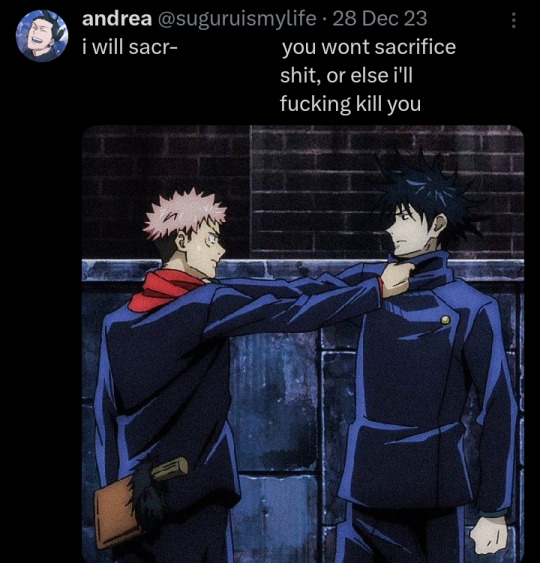
2K notes
·
View notes
Text
Jujutsu Kaisen Hanakotoba Analysis

⋘ ──── ∗ ⋅◈⋅ ∗ ──── ⋙
-> Black Lily
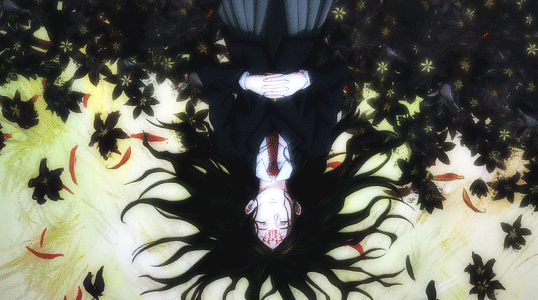

The flowers pictured in this scene are black lilies (Lilium) which are known as kuro yuri (黒百合) in Japanese. Its hanakotoba meanings are “love” and “curse”. In Western floriography, they symbolise rebirth, transformation and the appeal of the unknown. In the scene pictured above Tsumiki Fushiguro is seen surrounded by myriads of black lilies which is fitting considering she was cursed and fell into a coma. Cursed love is a significant theme in Jujutsu Kaisen, particularly in the prequel film Jujutsu Kaisen: 0. In the film, Gojo says, "Love is the most twisted curse of all." This perfectly encapsulates the symbolic meaning of the black lily.
-> Black Petunia


“Made my decision,
I won't go back anymore, and I won't regret it.
Watch as I change reality.
Even if the truth is cruel...
Catastrophe will be overwhelmed..."
(Vivid Vice, Who-ya Extended)
While the flower pictured in Jujutsu Kaisen’s second opening, Vivid Vice, is often thought to be a black lily; it more closely resembles a black petunia. Petunias are known as pechunia (ペチュニア) in Japanese and hold the hanakotoba meanings of “peace of the heart” and “with you, the heart will be soft”. In Western floriography, petunias mean “your presence soothes me”. Darkness, mourning, and resentment are associated with black petunias. However, black petunias also have the enigmatic connotations of strength, mystery, and uniqueness.
In the opening, a black flower, presumably a petunia opens up while a juvenile Emperor Angelfish (Pomacanthus imperator) swims around it. This fish is thought to represent Junpei Yoshino while the flower is thought to represent Yuji Itadori. Additionally, throughout this Jujutsu Kaisen’s opening sequences water has been shown to represent danger and destruction. Thereby making this scene a depiction of how Yuji’s strength has blossomed because of having undergone serious loss and being nurtured by danger and destruction. Both Yuji’s background as well as the origin and full extent of his unique abilities remain shrouded in mystery. This ties in with black petunias symbolizing strength, mystery and uniqueness. In addition to this Yuji’s kindness, upbeat and easy-going personality bring a sense of reassurance to those that know him well. The other connotations of the petunia, which include "your presence soothes me," "the heart will be soft with you," and "the peace of the heart," are all related to these attributes.
-> Red Spider Lily
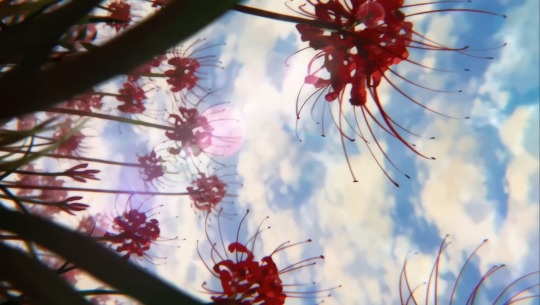
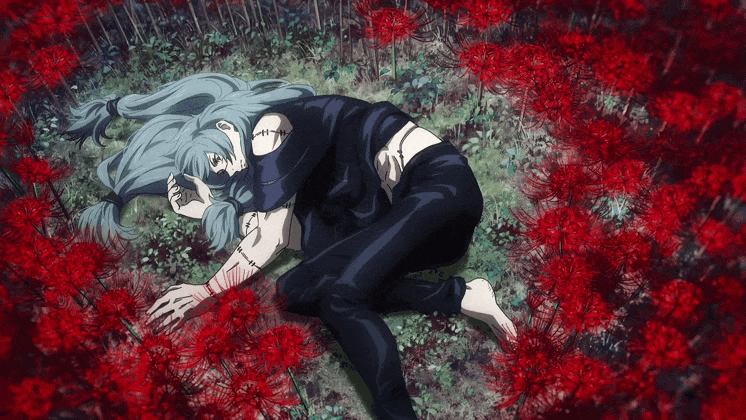

“Memories are fragile
I have no use for yesterday
So the moon is dark, twisting light
Where shall I go tomorrow” (Akari, Soushi Sakiyama)
“Indomitable spirit and immeasurably bottomless love and hate
The everlasting half-melted life bound to the fallen” (Avant, Eve)
In Japan, red spider lilies (Lycoris radiata) are known as higanbana (彼岸花) which means autumn equinox flower. They represent sad memories, resignation, independence, lost memory, abandonment, passion and those who are never to meet again in Japanese hanakotoba. The red spider lily is also associated with death, goodbyes, rebirth and the far shore (land of the dead). The red spider lily's symbolic meaning of farewells and rebirth is embodied in classic Japanese artworks depicting mythological situations, where they are referred to as the "flowers of heaven.“ In Japan, there is a strong correlation between the Buddhist and Shinto religions and red spider lilies. These striking flowers are thought to represent rebirth and the transience of life.
They are also believed to guide the deceased's spirits transition to the afterlife. They are frequently observed blossoming next to cemeteries or other holy locations. They are also thought to have protective properties that shield against negative energy and evil spirits. Red spider lilies are also thought to symbolise the boundary between life and death in Japanese culture. This is because its flowers bloom during autumnal equinox when Japanese Buddhists believe that deceased people's spirits return to the near shore (the world of the living).
Some legends claim that when an individual crosses paths with someone they will never see again, red spider lilies blossom alongside their path. These legends are partly responsible for the flower's affinity with final goodbyes, in addition to its association with death and the hereafter. This flower is also regarded as a symbol of both death and rebirth and are described as the flowers that grow in hell in the Lotus Sutra. As a result of this, certain Buddhist traditions in China and Japan believe that these flowers aid spirits in crossing from the afterlife into reincarnation.
The flower's sad symbolism for loss and parting is based on an ancient Chinese legend about two elves, Saka and Manju, who were the guardians of leaves and flowers, respectively. They could never meet, however, because the red spider lily never sprouts flowers and leaves at the same time. They both yearned to meet one another, and they violated the gods in order to do so. The gods punished them harshly for this and separated them for eternity. The flower is still associated with loss, both of loved ones and of memories.
Despite their frequent association with death and parting, red spider lilies are also admired for their beauty and resilience. They can survive in a range of challenging environments, including rocky and riverside locations, and their vivid red hue helps them stand out against the surrounding scenery. As a result of this, these flowers can also be seen as a symbol of strength and perseverance in the face of adversity. The red spider lily also represents beauty because of its vivid, vibrant red blossoms, which give a sense of elegance.
Red spider lilies are pictured in Jujutsu Kaisen’s 3rd ending theme as well as the opening credits for its mobile game, Phantom Parade.
In ED3, the flowers could be a harbinger of how various characters in this arc will meet their impending deaths, separating them from everyone else. The final panel of this ending depicts Gojo and Geto walking beneath a bridge. The underbridge in the real-life location on which this scene was based is only a single-path bridge, however here the bridge splits into two opposite directions. This is similar to legends that state that when a person meets paths with someone they will never see again, crimson spider lilies bloom across their path. This alludes to how Gojo and Geto will part ways at the end of the Hidden Inventory Arc and will never walk alongside each other again.
In the Phantom Parade OP, myriads of spider lilies are pictured under an ominous sky surrounding Mahito and Pseudo-Geto. The use of these flowers here foreshadows their connection with the far shore, their association with human souls and bodies, and their nefarious schemes involving carnage and death.
-> Cherry Blossom

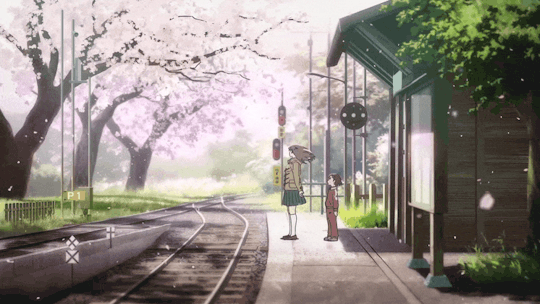
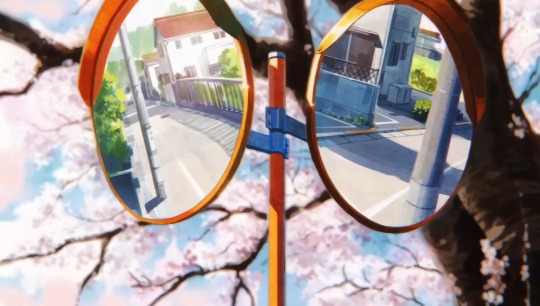

“And now, I can only imagine my future taken away by a curse.
Running and falling,
embracing these wounds that won't disappear...
The world awaits for this moment.”
(Kaikai Kitan, Eve)
The cherry blossom (Prunus) is known as the Japanese cherry and is the unofficial national flower of Japan. Its Japanese name Sakura (桜) has been derived from the word “saku” which means “to bloom”. Its hanakotoba meanings are “beauty of spirit”, grace, chastity, excellent beauty, gentleness, good education and the “transience of life”. In Japan, cherry blossoms are also a symbol of the “beauty of impermanence”—a Shinto concept better known as “mono no aware” (物の哀れ) as their falling petals are a reminder that although life is short, it is beautiful and should be savoured.
The Japanese concept of “natsukashii” (懐かしい) likewise emphasizes the fleeting nature of cherry blossoms. This concept refers to the happy-yet-wistful nostalgia for times and things that we will never be able to go back to. We will never get to experience those moments again, just like the ephemeral cherry blossoms, which makes them even more significant.
Cherry blossoms bloom from March to April which is the start of the new fiscal year in Japan. As a result of this cherry blossoms have also come to symbolise new beginnings and springtime. Given that feudal Japanese soldiers associated cherry blossoms with honour, discipline, and dignity—falling flowers were thought to be symbolic of a Samurai's death. In Western floriography, cherry blossoms herald the changing of the seasons and symbolise renewal and rebirth. They also symbolise the fleeting nature of life, tenderness, forgiveness, strength, beauty, love, confidence, peace, friendship and gratitude.
The Cherry Blossom's association with "happy-yet-wistful nostalgia for times and things that we will never be able to go back to" is reminiscent of both Gojo's and Yuji's carefree high school days before the Hidden Inventory Arc and Shibuya Incident respectively. The transiency of life is a central motif in Jujutsu Kaisen, as being a Jujutsu sorcerer means facing the threat of death around every turn. "No matter how many allies you have around you; when you die, you'll be alone". This line said by Gojo reinforces that one's time in life is finite and that nothing can stop death. Even if you have your loved ones with you at the time of death, they will not accompany you on your journey to the hereafter.
-> Ginkgo

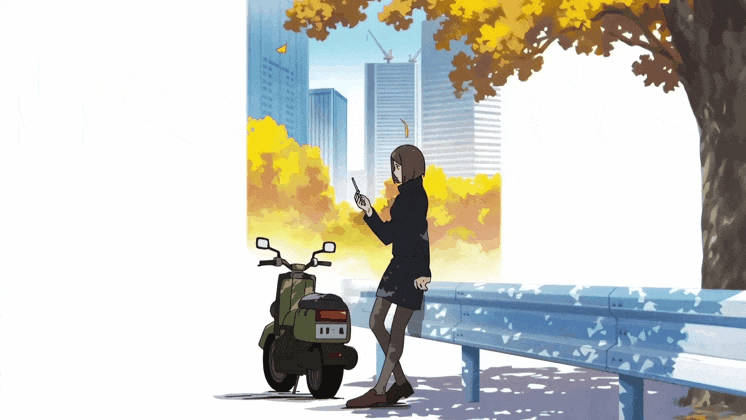


In Japan, ginkgo trees (Ginkgo biloba) are called ginkyo (銀杏) and symbolise magnificence, longevity, requiem, strength, hope and peace in hanakotoba. In Western floriography, ginkgo trees symbolise solemnity, longevity and requiem. The beauty and symbolism of the ginkgo tree are valued by many European cultures, who associate it with power, resilience, human progress, enlightenment, and memory enhancement. The ginkgo tree also represents renewal as shows off a magnificent colour display each autumn as it sheds its leaves to sprout new ones. In other Asian cultures, ginkgo trees are highly symbolic of longevity, endurance, resiliency, and hope. The ginkgo's symbolic meaning is said to be derived from the tree’s ability to survive under the harshest conditions as well as its long lifespan. When displayed as a single tree, it stands for strength and solitude.
Many of Jujutsu Kaisen's characters embody the Ginkgo's symbolic qualities of strength, power, resilience, renewal, and solemnity. Meanwhile, the tree's symbolic meanings of hope and longevity are contradicted by its brutal motifs and numerous tragic deaths.
-> Hydrangea


“Before my goodwill breaks down,
I should have told you everything.
In a life where night descends and dissolves,
The murky feelings flicker in the dim light.”
(Akari, Soushi Sakiyama)
Hydrangeas (Hydrangea macrophylla) are known as Ajisai (紫陽花) in Japan. Its meanings in traditional hanakotoba are pride, patience, coldness, heartlessness and temperament. Conversely, the flower is also connected with empathy and apology. In Japanese culture, the blossom has both positive and negative connotations, representing both deep or heartfelt emotion in addition to a fickle or changeable heart. In Western floriography, hydrangeas have both negative meanings—such as heartlessness, boastfulness, and coldness—as well as positive meanings—such as sincerity, honesty, gratitude, heartfelt emotions and deep understanding.
The hydrangea's symbolic meanings of pride, patience, coldness, heartlessness, temperament, and a fickle or changeable heart correspond to Gojo's character during the Hidden Inventory Arc and Geto's character post-Hidden Inventory Arc. The flower's connotation of deep or heartfelt compassion and empathy corresponds to Geto's character during the Hidden Inventory Arc and Gojo's character after the Hidden Inventory Arc. Hydrangeas are also associated with gratitude, sincere emotions and deep understanding, all of which characterise Gojo and Geto's friendship.
-> Osmanthus
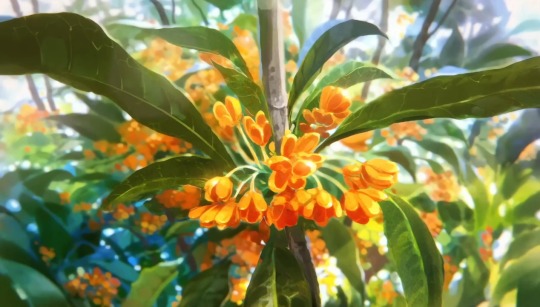

Sweet osmanthus (Osmanthus fragrans ) is also known as orange osmanthus, sweet olive, tea olive and fragrant olive. It is known as Kinmokusei (金木犀) in Japan and symbolizes a “humble and noble person” as well as “first love” in hanakotoba. Contrary to its sweet and wonderful fragrance, this plant only produces small, modest flowers, from which it is supposed to draw its symbolism of humility. The reason osmanthus symbolises nobility is supposed to have originated from the way that rain gracefully scatters the flowers without diminishing their fragrance. Osmanthus also symbolizes love, passion and sensuality in Japanese culture. In Western floriography, osmanthus flowers symbolize love, faithfulness, prosperity, happiness, fortune and protection. Orange osmanthus flowers in particular symbolize joy, optimism and serenity. Osmanthus flowers also symbolize honesty, spiritual enlightenment, elegance and beauty.
The Osmanthus flower’s meanings of joy, serenity, optimism, happiness, faithfulness and good fortune encapsulate the carefreeness of Gojo and Riko’s school days before the Hidden Inventory Arc. Its symbolic meanings of faithfulness, happiness, purity, beauty and optimism resonate with Riko’s character. While its symbolic meanings of spiritual enlightenment, honesty, elegance, protection, nobility and good fortune resonate with Gojo’s character.
⋘ ──── ∗ ⋅◈⋅ ∗ ──── ⋙
╰┈➤ Anime Hanakotoba Posts Directory
╰┈➤ JJK OP4 Traditional Symbolism
[I didn't go into much depth here since I wanted to keep things brief—because I know my other posts have been somewhat wordy lately... Please feel free to leave your thoughts and suggestions in the comments section. Also, I added new information that I missed to my "JJK OP4 Traditional Symbolism" post, so check that out if interested.]
If you liked this post, you should check out my other hanakotoba posts… I've created a convenient directory so you can locate them all without having to browse through my entire blog.]
#And yes I copied some of the flower descriptions verbatim from my tgcf post...#but it's a lot of unnecessary work to type out the same information twice just to word it differently...#you can't plagiarise yourself right... right?#jujutsu kaisen#jjk#jjk 0#jjk season 2#jjk season 1#jjk s2#jjk s1#jjk anime#jjk analysis#jjk hanakotoba#jujutsu kaisen hanakotoba#anime hanakotoba#hanakotoba analysis#hanakotoba#floriography#anime analysis#anime openings#anime endings#anime
15 notes
·
View notes
Text
People fangirling over Gojo Satorou Pt. 1
featuring Miwa

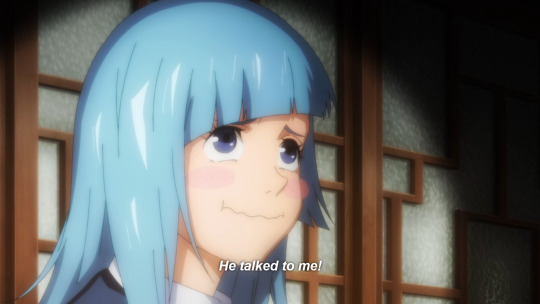



#gojo satoru#miwa kasumi#jjk#jujutsu kaisen#jjk anime#jjk s1#jjk satoru#satoru gojo#gojo and his pretty boy energy
29 notes
·
View notes
Text
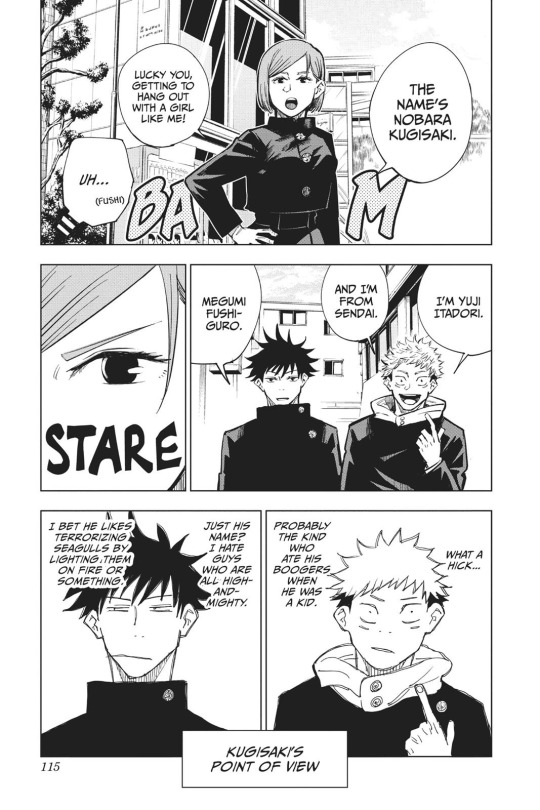
jjk volume 1 chapter 4
#cerajjktag#nobara kugisaki#megumi fushiguro#yuji itadori#jujutsu kaisen manga#jujutsu kaisen#jujutsu kaisen art#jujutsu sorcerer#jujutsu kaisen volume 1#jujutsu kaisen chapter 4#jujutsu kaisen story#jjk#jjk art#jjk manga#jjk s1#jjk characters#jjk volume 1#jjk nobara#jjk megumi#jjk yuji#jujutsu itadori#jujutsu kugisaki#jujutsu fushiguro#megumi panel#yuji panel#nobara panel#nobara#yuji#megumi#nobara's point of view
94 notes
·
View notes
Text

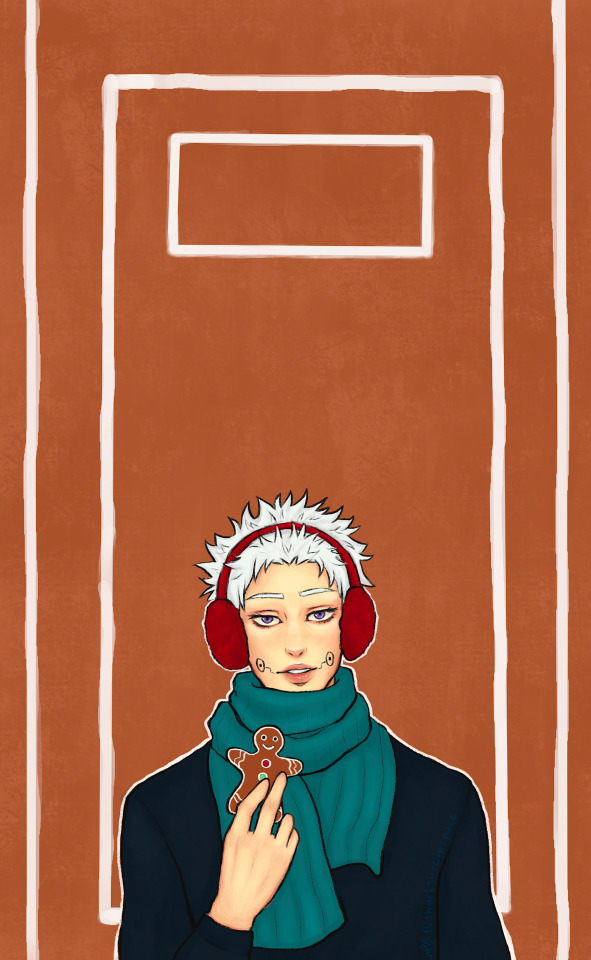
toge christmas lockscreen
#inumaki toge#fanart#christmas#christmas lockscreens#toge inumaki fanart#toge fanart#jjk#jjk s1#jjk s2#jujutsu kaisen#jujutsu kaisen anime#jujutsu kaisen manga#jujutsu kaisen lockscreen#jujutsu kaisen art#jujutsu kaisen season 2#jujutsu kaisen toge inumaki#jujutsu kaisen toge#jujutsu sorcerer#digital art#procreate#gingerbread#gingerbread man#winter#winter lockscreens#jujutsu kaisen fanart#holiday#holiday lockscreen#lockscreens#jjk anime#precious angel gingerbread boi
14 notes
·
View notes
Text

Jujutsu Tech High School Class of 2018
EVERYTHING IS FINE AU
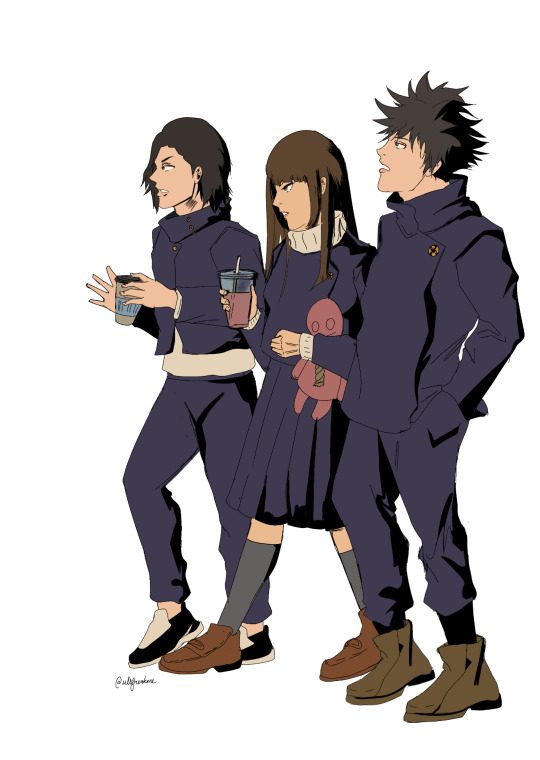

#jujutsu kaisen fanart#jujutsu kaisen#jjk#jjk fanart#jjk s2#jjk s1#yuji itadori#nobara kugisaki#megumi fushiguro#nanako hasaba#mimiko hasaba#yoshino junpei#ultfreakme art#jjk au#jujutsu kaisen season 2
100 notes
·
View notes
Text
✧・゚— SATORU GOJO GIF PACK
below the cut you will find #7 gifs (540x304) of SATORU GOJO from JUJUTSU KAISEN S1 Ep24.
these gifs were made from scratch by me, so please do not repost into gifsets/gif hunts or claim them to be your own. you can crop these for icons, or use them for crackships and edits but you MUST GIVE ME CREDIT IF YOU POST THEM PUBLICLY; please also like and reblog!
(click the title to be taken to my masterlist!)


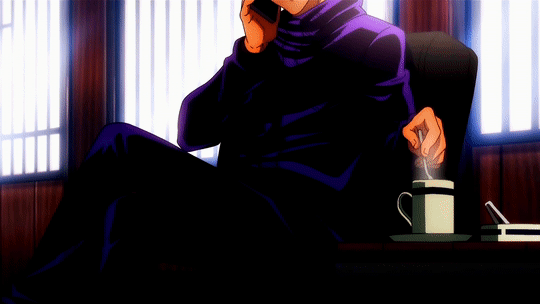


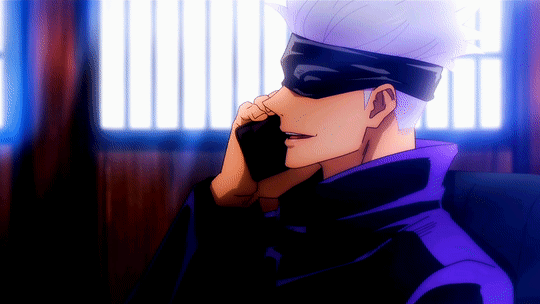



#gifset#gif hunt#gif pack#gifs#jjk s1#jjk gifs#jjk gifset#jjk#jujutsu kaisen gifpack#jujutsu gojo#jujutsu kaisen satoru#gojo satoru gifhunt#avengers endgame#satoru gojo#satoru gojo gifpack#gojo satoru#gojo gif#jjk season one episode twenty-four
5 notes
·
View notes